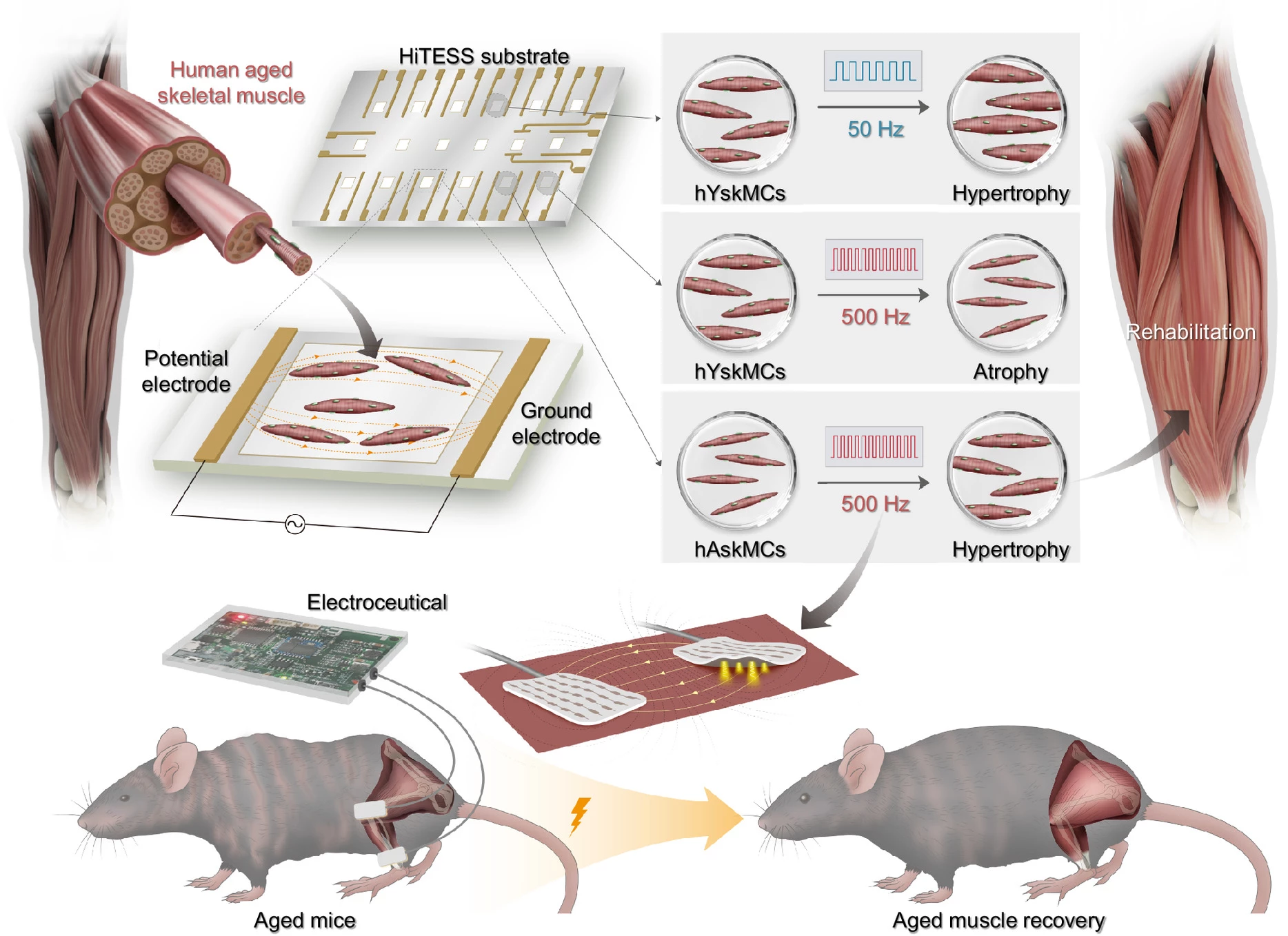Sarcopenia affects up to 16% of the world’s aging population and is one of the leading factors in the loss of independence. Marked by a loss of both muscle mass and function or strength, it’s behind many age-related falls, poor mobility and functional decline. What’s more, to date there’s no ‘cure’ or treatments to halt its progression, let alone reverse it, and most intervention is based on slowing the loss of muscle mass with lifestyle and diet changes.
Now, scientists at Daegu Gyeongbuk Institute of Science & Technology (DGIST) in South Korea have developed a novel bioelectric therapy that restored muscle cells in aging mice, and they’re confident of its promise to have a similar effect in human models.
"The number of patients with sarcopenia has exploded recently due to restrictions on social activities owing to the COVID-19 pandemic and aging of the world's population,” said lead author Minseok Kim, a professor in DGIST’s Department of New Biology. "This research is significant because it confirms, for the first time, the potential of applying bioelectric medicine to treat sarcopenia, a disease for which there currently is no cure. We also identified the optimal electrical stimulation conditions for muscle recovery as a function of age, which may lead to a paradigm shift in the development of personalized electrotherapy treatments.”
The team developed a biochip-based electrostimulation (ES) screening platform for aging human muscle cells. Using this, they were able to pinpoint the optimal ES conditions that coaxed aging muscle cells to regenerate. While ES has the potential to damage muscles, at the optimal level the researchers found it has a positive interaction with calcium signaling, senescence and metabolism. A restoration of calcium signaling in aged skeletal muscles can induce hypertrophy, or an increase in muscle mass.
The team tested this optimal ES hypothesis on aged mice, treating them with bioelectric therapy for six weeks. At the end of the trial, the animals had improved muscle mass and muscle quality, compared to a control group. The muscles also showed an uptick in contractile force and tissue formation, suggesting the treatment didn’t just rebuild mass but improved function.

While preliminary, the team believes it could change the way existing ES is used.
"Currently, many electrical muscle stimulation devices have been used in hospitals and homes without considering the optimal ES conditions," the team noted in the study. "Through this research, we suggest that a specific ES for sarcopenia needs to be applied to maximize the effect with minimal side effects, and we wish to call the introduced technology silver electroceutical.
"This study can potentially be the basis for the development of personalized bioelectric medicine for sarcopenia."
The study was published in the journal Proceedings of the National Academy of Sciences (PNAS).
Source: DGIST via Asia Research News






